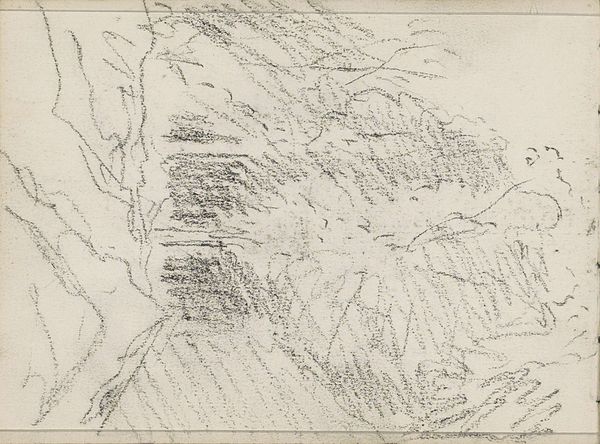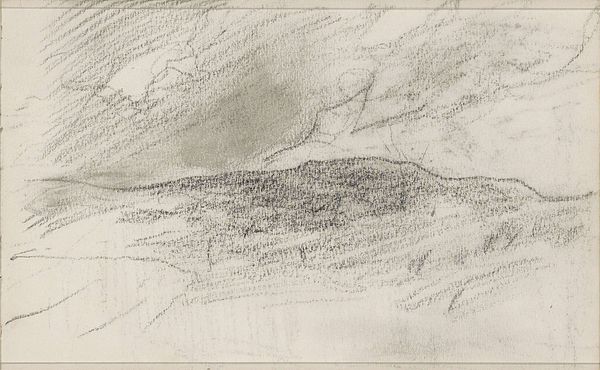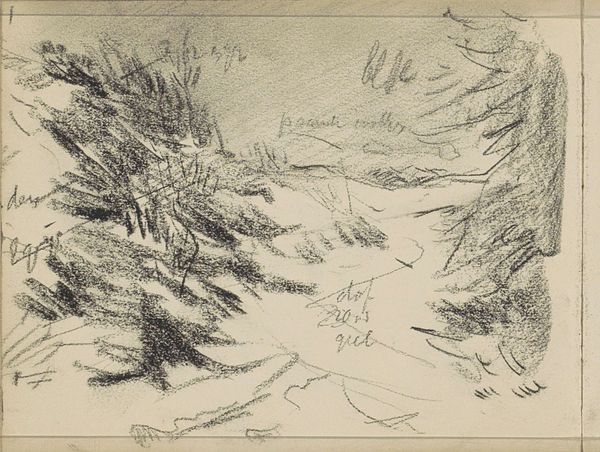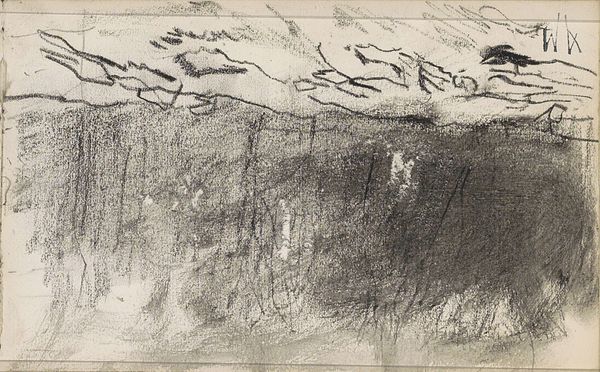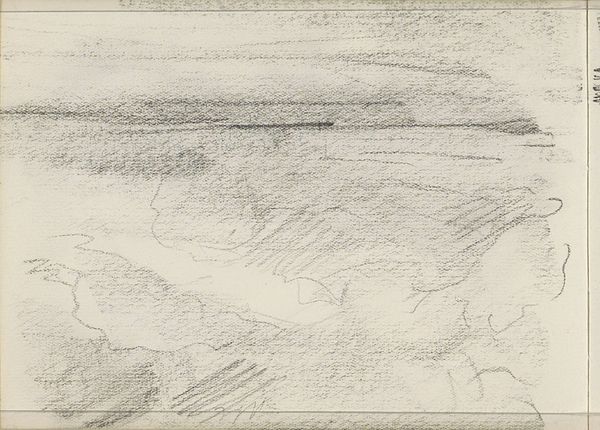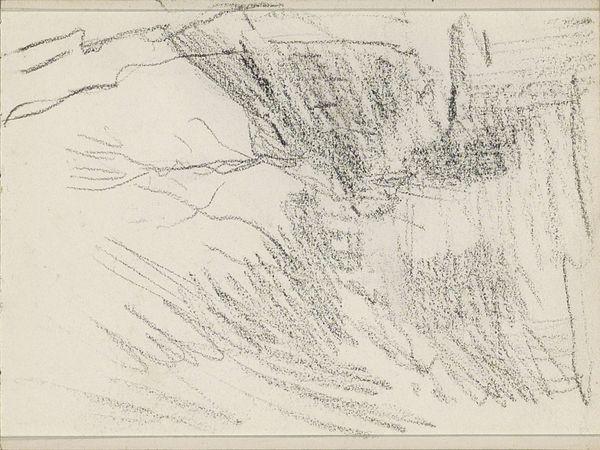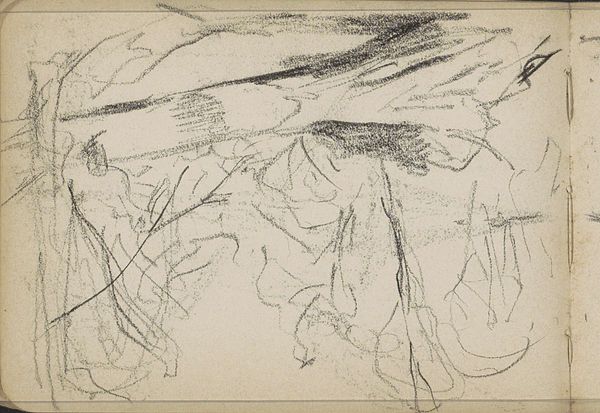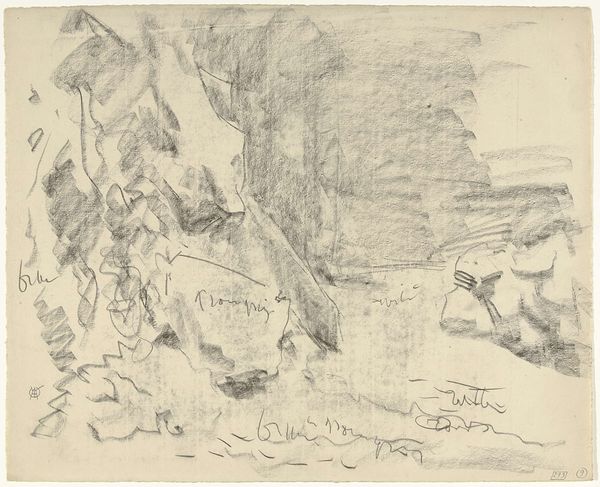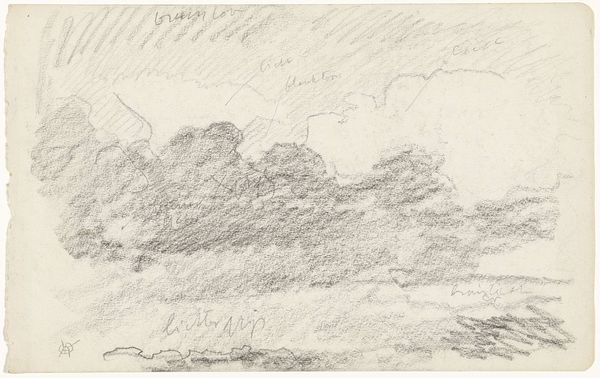
drawing, pencil, frottage
#
drawing
#
impressionism
#
pencil sketch
#
landscape
#
pencil
#
frottage
#
realism
Copyright: Rijks Museum: Open Domain
Curator: Here we have Anton Mauve’s "Landschap met bomen en struiken," dating from around 1876 to 1879. It’s a drawing rendered in pencil, and the texture almost feels like frottage in places. Editor: My immediate impression is of a study in contrasts; light and shadow wrestling across the paper. It feels less like a definitive depiction of a place, and more like a capture of fleeting light conditions. Curator: I think you’re right; there’s definitely an interest in capturing the ephemerality of light here. Consider Mauve's broader body of work and how his skills making landscape paintings, which often romanticized the Dutch countryside and rural life, translated into sketches. Pencil became the mode to depict his natural surroundings during his many travels. Editor: I am especially drawn to how accessible the medium is. Using humble materials to render observations of nature moves the artwork closer to being part of an active dialogue around labor conditions for creative workers. One can even think about its relation to the rise of industrial pigments or readymade canvases, positioning itself firmly in opposition. Curator: It's definitely true the simplicity underscores accessibility; a readily available technology made artmaking very portable. The quickness with which it was done further illustrates Mauve's wish to illustrate a rapidly industrializing Dutch countryside being seen in tandem with more untouched areas that would’ve reflected the Dutch golden age of painting. Editor: In this context, its focus on land and landscape aesthetics gains meaning in discussions around labor struggles, economic inequity and industrialization as systems that simultaneously separate people from land, and obscure clear visual markers of oppression through landscape fantasies that allow for a lack of critique towards a quickly morphing late nineteenth century. Curator: I see what you mean; this tension seems ever-present, captured simply but powerfully on this paper. It urges you to ask what this landscape truly is, which opens itself up for such a diverse body of critical thought and reflection on how artwork gets created or valued by different members of society. Editor: Absolutely. It gives us so much to think about when we understand the piece's material presence not merely as an end, but as a critical method and position from which to reflect on larger political implications of Mauve's observations.
Comments
No comments
Be the first to comment and join the conversation on the ultimate creative platform.
